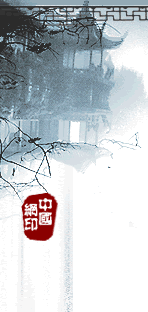
 |
| Suzhou, a cultural and historical city in east China's Jiangsu Province, is celebrated around the world for its elegant gardens. The history of Suzhou's gardens can be traced as far back as the Spring and Autumn Period (770 BC - 476 BC). Distinctive gardens continued to appear throughout the subsequent dynasties, but it was during the Ming (1368 - 1644) and Qing (1644 - 1911) that the garden art of Suzhou was at its zenith. The prospering city and its outskirts were dotted with exquisite private gardens. Dozens of them, such as Zhuozheng (Humble Administrator's) Garden, Liuyuan (Lingering) Garden, Wangshi (Master of Nets) Garden and Huanxiu (Embracing Beauty) Mountain Villa, are still well preserved today. Imperial gardens and private gardens each developed their own distinctive features over many years. The imperial gardens of Beijing are considered the finest examples of that style. They are noted for their expansive size, grandeur and stateliness. The gardens of Suzhou are the epitome of landscaping art for the private garden, with their delicacy, intimacy, and simplicity. The designers of private gardens, not bound by the rigid conventions of the imperial court, had greater freedom of expression in their art. The ancient gardens of Suzhou were designed to be lived in as much as were the houses to which they were attached. Paths invited residents and their guests to wander, offering a new view at every bend; pavilions, gazebos or simple seats offered comfortable spots in which to relax, chat, and perhaps to take some refreshments or pen a poem. This type of landscaping was often used in the densely populated cities, where residents recalled the countryside with nostalgia and yearned to commune with nature. Zhuozheng (Humble Administrator's) Garden, Liuyuan (Lingering) Garden, Wangshi (Master of Nets) Garden and Huanxiu (Embracing Beauty) Mountain Villa of Suzhou are representative of the Ming- and Qing-dynasty landscape architecture in areas south of the lower reaches of the Yangtze River. In fact, it was the perfection of the designs and workmanship of these gardens that influenced landscaping throughout the region. Horizontal inscribed boards, hanging scrolls, sculptures and hall decorations, as well as the trees, stones and ponds in the gardens are not only delightful treats for the senses. They also provide a wealth of information as to the history, society, values and aesthetics of the eras in which they were built. They are storehouses of the artifacts of their times: calligraphy, carvings and paintings. But they are also treasure troves of classical thought. Wandering through the gardens even today, people can enjoy reflecting on the philosophic concepts and ideologies of Confucianism, Buddhism, and Taoism; they can still sense the romance of the ancient poetry and prose that influenced the gardens' creators. In recent years, the influence of the Suzhou gardens' designs has even traveled across oceans. Ming Hall Garden, at the Metropolitan Museum of Art in New York City, is a copy of a section of the Master of Nets Garden. The design of the Dr. Sun Yat-Sen Garden in Vancouver, Canada, was based on the Ming Dynasty Suzhou garden style. In 1997, United Nations Educational, Scientific and Cultural Organization (UNESCO) added to its prestigious list of world cultural heritage sites Suzhou's Zhuozheng (Humble Administrator's) Garden, Wangshi (Master of Nets) Garden, Liuyuan (Lingering) Garden, Canglang (Surging Waves) Pavilion, Yipu Garden (Garden of Cultivation), Huanxiu (Embracing Beauty) Mountain Villa, Ouyuan (Couple's Garden Retreat) Garden, Shizilin (Lion Forest) Garden and Tuisiyuan (Retreat and Reflection) Garden. (China.org.cn May 19, 2004) |
